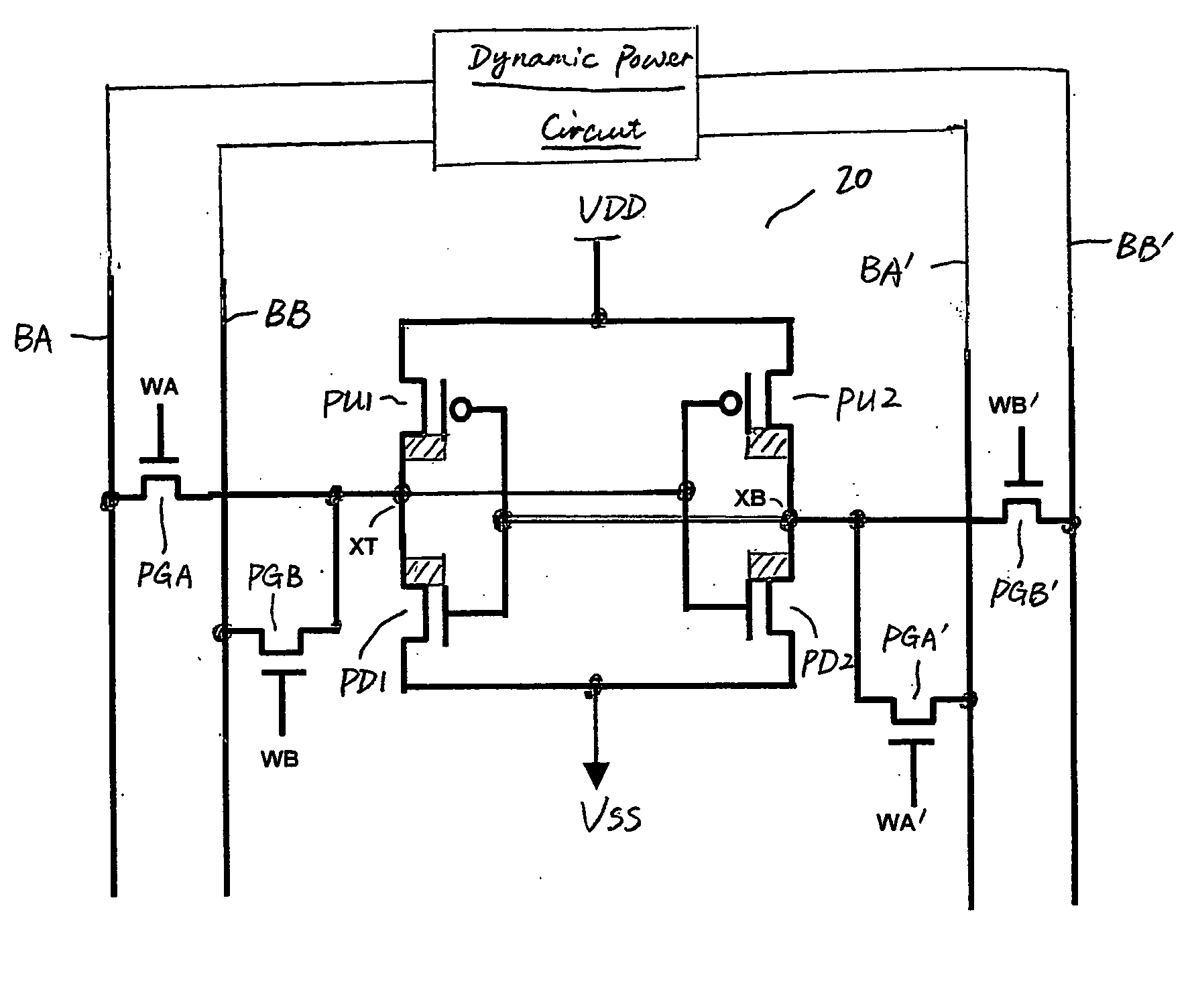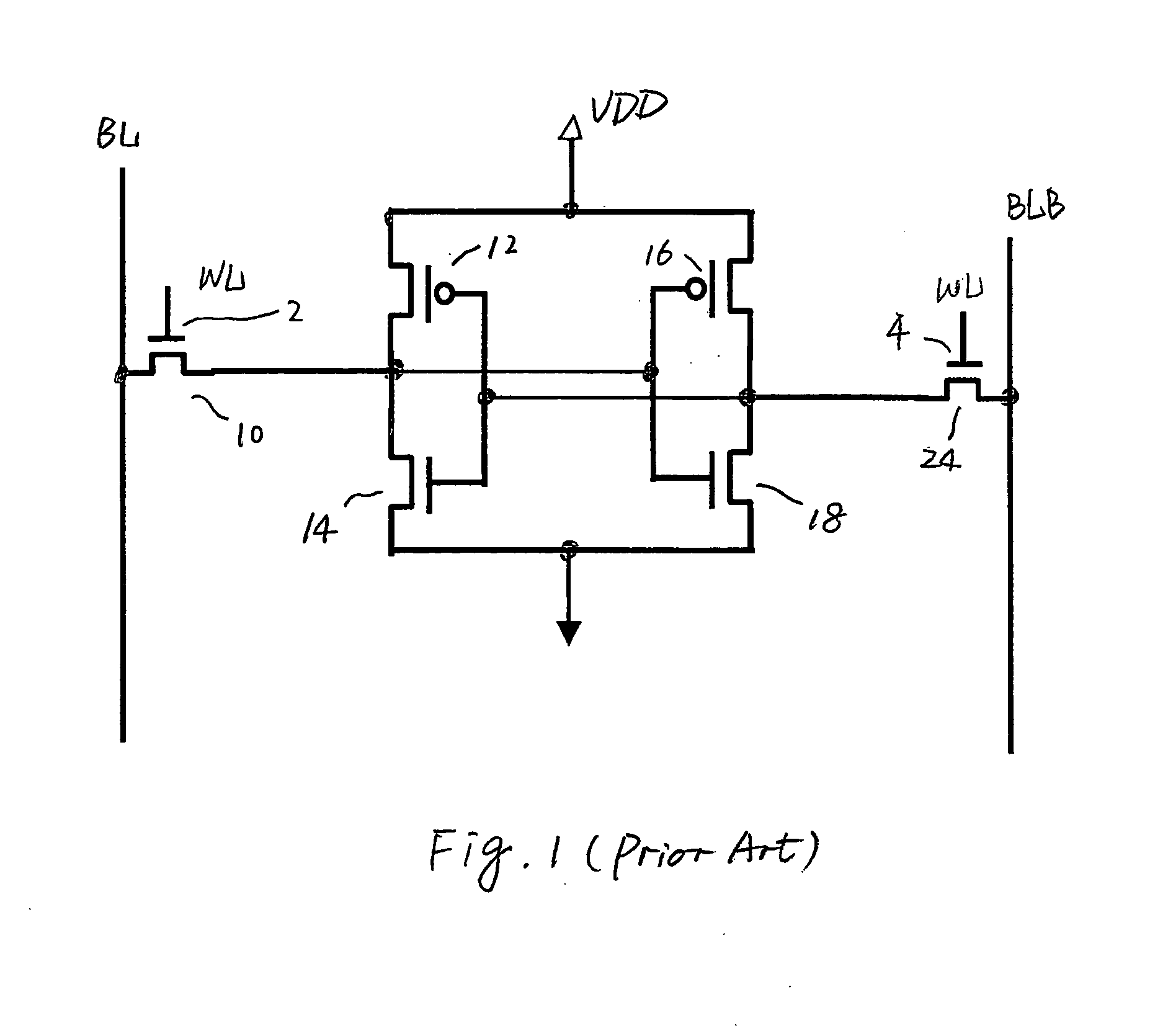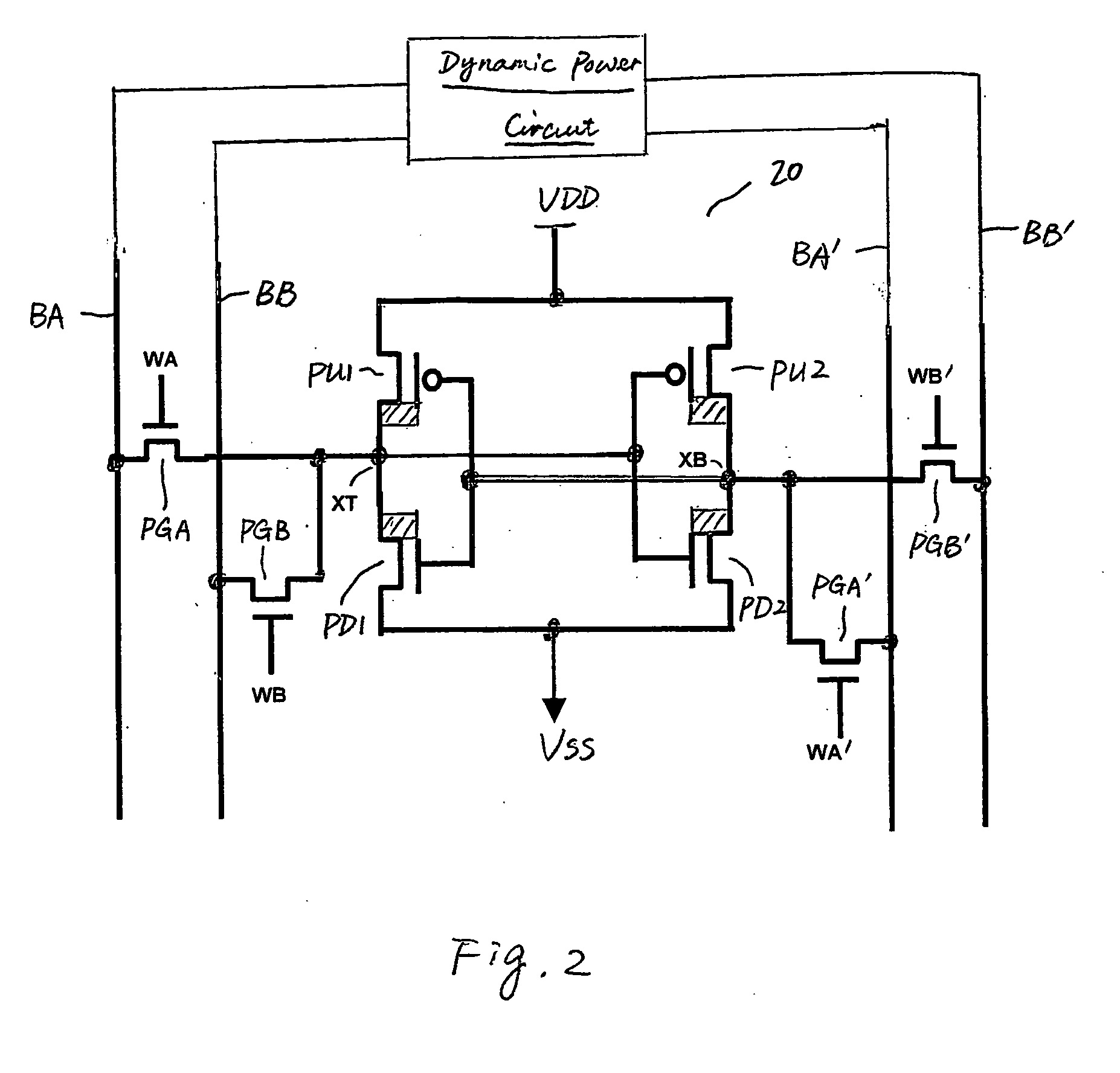Read-preferred SRAM cell design
- Summary
- Abstract
- Description
- Claims
- Application Information
AI Technical Summary
Benefits of technology
Problems solved by technology
Method used
Image
Examples
first embodiment
[0023]In a first embodiment, the increase in the α ratio and / or β ratio is achieved by increasing the physical width-to-length ratios (also referred to as W / L ratios) of the pull-down and / or pull-up MOS devices, respectively. In an exemplary embodiment, the W / L ratios of the pull-down MOS devices PD1 and PD2 and the W / L ratios of the pass-gate MOS devices PGA, PGB, PGA′, and / or PGB′ preferably have ratios of between about 1.8 and 5. In another exemplary embodiment formed using 90 nm technology, pull-down MOS devices PD1 and PD2 have a gate width of about 180 nm and a gate length of about 100 nm, while pass-gate MOS devices PGA, PGB, PGA′, and PGB′ have a gate width of about 120 nm and a gate length of about 115 nm. The resulting W / L ratios of the pull-down MOS devices PD1 and PD2 and the W / L ratios of the pass-gate MOS devices PGA, PGB, PGA′, and / or PGB′ have α ratio of 1.725.
second embodiment
[0024]In a second embodiment, the increase in the α ratio and β ratio is achieved by weakening pass-gate MOS devices PGA, PGB, PGA′, and / or PGB′, and thus reducing their device drive currents. This may be achieved by reducing the W / L ratios of the respective pass-gate MOS devices. In addition, weakening the pass-gate MOS devices can be achieved either by skipping process steps commonly used for improving MOS devices, or adopting methods such as forming stressed ILD layer for pass-gate NMOS devices.
third embodiment
[0025]In a third embodiment, the increase in the α ratio and / or β ratio is achieved by forming asymmetric pull-up MOS devices PU1, PU2 and / or pull-down MOS devices PD1 and PD2. Referring back to FIG. 2, shaded rectangles are marked adjacent the source regions of the pull-up and pull-down MOS devices, symbolizing that respective MOS devices are asymmetric MOS devices.
[0026]An exemplary embodiment of an asymmetric MOS device 30 is shown in FIG. 3. MOS device 30 includes a gate electrode 32 on a gate dielectric 33, gate spacers 35 on sidewalls of the gate electrode 32 and gate dielectric 33, lightly-doped source / drain (LDD) regions 34, and pocket regions 36, 38, 40 and 42 in substrate 44. The illustrated MOS device 30 has asymmetric structures on the source side and drain side. An exemplary formation process is described as follows.
[0027]First, semiconductor substrate 44 is provided. A gate structure including a gate electrode 32 and a gate dielectric 33 is formed on semiconductor subs...
PUM
 Login to View More
Login to View More Abstract
Description
Claims
Application Information
 Login to View More
Login to View More - R&D
- Intellectual Property
- Life Sciences
- Materials
- Tech Scout
- Unparalleled Data Quality
- Higher Quality Content
- 60% Fewer Hallucinations
Browse by: Latest US Patents, China's latest patents, Technical Efficacy Thesaurus, Application Domain, Technology Topic, Popular Technical Reports.
© 2025 PatSnap. All rights reserved.Legal|Privacy policy|Modern Slavery Act Transparency Statement|Sitemap|About US| Contact US: help@patsnap.com



